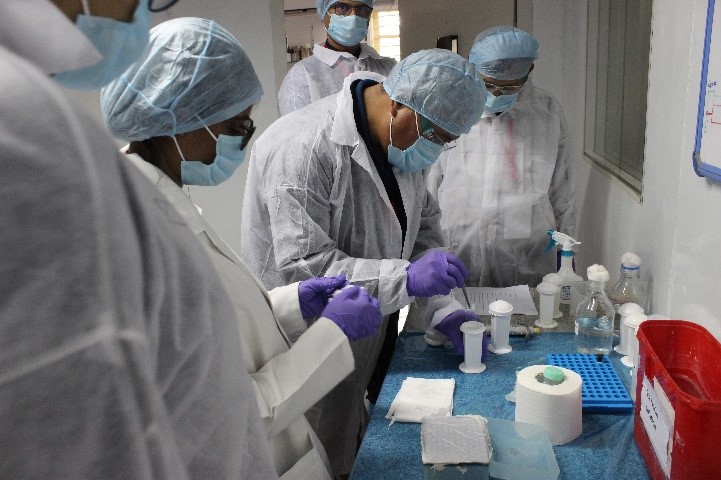
Rabies is a viral zoonotic disease that affects the central nervous system invariably leading to death. Although fatal, it is 100% vaccine-preventable disease. Approximately 99% of rabies infections are acquired by bite of an infected dog. Africa and Asia contribute to over 99% of human rabies deaths that occur in the world and the vast majority (about 60%) of these are in Asia. Rabies is endemic in both humans and animals in seven of the eight South Asian Association for Regional Cooperation (SAARC) Members States (MSs), contributing to about 45% of the global burden of human rabies. In South Asia, India alone accounts for 1/3rd of the global rabies burden and there is lack of dog rabies surveillance, primarily due to lack of diagnostic capacity and investment at the ground level. The burden of rabies is primarily on human health, but disease control must be focused on the animal source. Dog-mediated human rabies can be eliminated by tackling the disease at its animal source by enhancing dog rabies surveillance and mass dog vaccination.
The United Against Rabies (UAR) collaboration—which includes the Food and Agriculture Organization of the United Nations (FAO), the World Organisation for Animal Health (WOAH), and the World Health Organization (WHO), or the “Tripartite” – and the Global Alliance for Rabies Control (GARC) launched the “Zero by 30: global strategic plan to end human deaths from dog-mediated rabies by 2030” in 2018. The UAR has since evolved into the UAR Forum (launched in 2020) with more stakeholders including private sectors, academia and others joining the global initiative. This goal can be achieved through focusing on the areas that include pre- and post-exposure human prophylaxis, mass dog vaccination, surveillance and monitoring, laboratory diagnostic capability, risk communication and enforcement of legislations.
In June 2019, the Tripartite and partners organised the SAARC Tripartite Rabies Workshop in Nepal, which recommended that SAARC member states enhance their rabies surveillance activities by strengthening rabies diagnostic capacities at the national, sub-national and local levels. Due to the COVID-19 pandemic, the WOAH Regional Representation for Asia and the Pacific (RRAP) together with the KVAFSU-CVA-Rabies Diagnostic Laboratory, which is a WOAH Reference Laboratory for Rabies in India, housed at the Veterinary College, Bengaluru affiliated with the Karnataka Veterinary, Animal and Fisheries Sciences University (KVAFSU) in Bengaluru, India organized a series of virtual trainings on rabies diagnosis focusing on brain sampling, direct fluorescent antibody tests, and lateral flow assays in 2020 and serological tests in 2021. At these virtual trainings, attended by government veterinarians/diagnosticians from the SAARC member states, participants recommended WOAH and KVAFSU to organize physical trainings to get the real practical training experience following these virtual trainings.
Therefore, WOAH RRAP with KVAFSU and the Commonwealth Veterinary Association (CVA) organized the WOAH Sub-Regional Training Workshop on Animal Rabies Diagnosis for South Asia at the Veterinary College, Hebbal, Bengaluru, India. The CVA which has a MOU with WOAH, hosted its 20th Asian Regional Meeting in Bengaluru, India during the week of 17 January 2023, and the WOAH Rabies Diagnosis Training for South Asia was part of the side event during the Regional Meeting.
This training focused on the WOAH-recommended occipital foramen technique of brain sampling. This safe, rapid, and user-friendly technique can be easily applied even in field conditions. Other topics covered included use of lateral flow assays in rapid detection, direct fluorescent antibody tests (DFAT) – the gold standard test for rabies diagnosis – and the direct rapid immunohistochemical test (DRIT).
This training contributed to the following objectives:
Veterinarians, laboratory officers, and diagnosticians working on animal rabies diagnosis at the national/sub-national rabies laboratories of SAARC were participants in this training course. In total, 14 participants from the SAARC member states (excluding Maldives) were invited for the training, including one observer representing Zambia.

